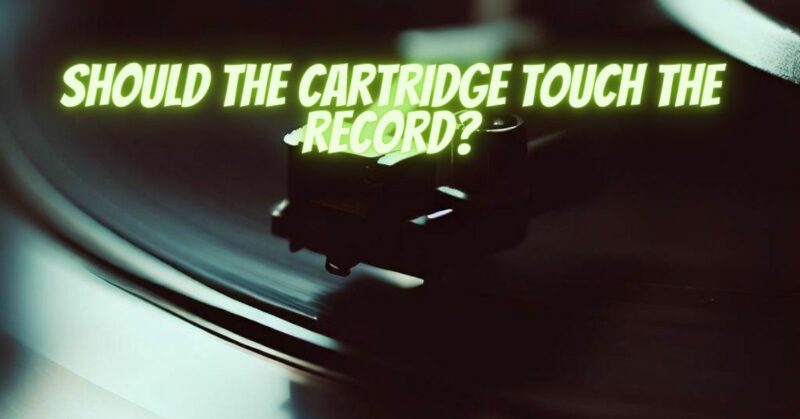In the world of vinyl playback, achieving the best possible sound quality is a pursuit that involves attention to detail at every step. Among the crucial factors that influence the fidelity of the music is the positioning of the cartridge in relation to the record. This article delves into the significance of proper cartridge positioning and its impact on sound quality, tracking accuracy, and the overall health of vinyl records.
The Cartridge-Record Interface
At the heart of the turntable’s playback system is the cartridge, which houses the stylus that makes contact with the record’s grooves. The interaction between the stylus and the grooves is a delicate dance that directly influences the quality of sound reproduction. Proper positioning of the cartridge ensures that this interaction is optimized, resulting in accurate tracking and minimal distortion.
Optimizing Tracking and Sound Quality
The position of the cartridge, specifically its alignment and azimuth, plays a pivotal role in achieving optimal tracking and sound quality. Cartridge alignment refers to the correct angular placement of the stylus within the grooves. Misalignment can lead to uneven wear on the record’s grooves, causing distortion, loss of detail, and increased groove noise. Additionally, improper alignment can cause the stylus to skip or jump, compromising the listening experience.
Azimuth, on the other hand, refers to the vertical alignment of the cartridge in relation to the record surface. A misaligned azimuth can result in channel imbalance, where the left and right channels do not reproduce sound equally, leading to an unbalanced stereo image.
Minimizing Wear and Extending Record Life
Proper cartridge positioning isn’t just about sound quality—it also contributes to the longevity of your vinyl collection. When the cartridge is accurately aligned, the stylus tracks the grooves smoothly, distributing the force evenly across the surface. This minimizes groove wear and reduces the risk of groove damage, preserving the record’s integrity and allowing for repeated, high-quality playback over time.
Tools and Techniques for Cartridge Positioning
Achieving accurate cartridge positioning requires attention to detail and the right tools. Two common alignment techniques are the Stevenson and Baerwald alignments, each offering a different approach to achieving optimal tracking across the entire playing surface. Using alignment protractors and digital tracking force gauges, enthusiasts can fine-tune the alignment and azimuth settings for their specific cartridge and tonearm combination.
Additionally, regular checks and adjustments of cartridge positioning are essential, especially if you change cartridges or experiment with different setups. Over time, environmental factors, tonearm adjustments, and stylus wear can subtly alter the cartridge’s position, affecting tracking and sound quality.
The proper positioning of the cartridge in relation to the record is a critical factor in achieving the best possible sound quality, accurate tracking, and extended record life. Enthusiasts who invest time and attention into understanding cartridge alignment and azimuth adjustments will be rewarded with a listening experience that captures the true essence of vinyl’s analog warmth and musicality. With the aid of alignment tools and a commitment to regular maintenance, audiophiles can ensure that their turntable setup delivers the highest level of sonic fidelity and preserves the integrity of their vinyl records for years to come.


